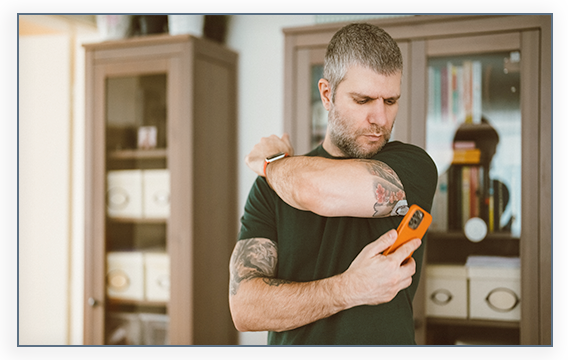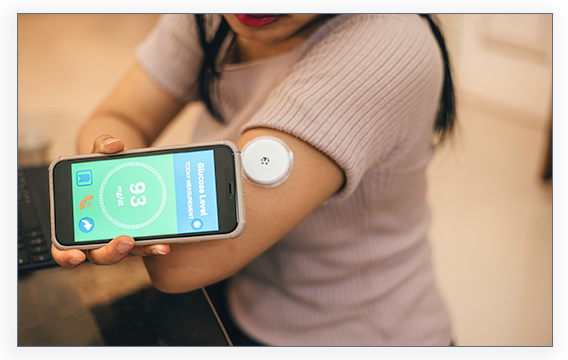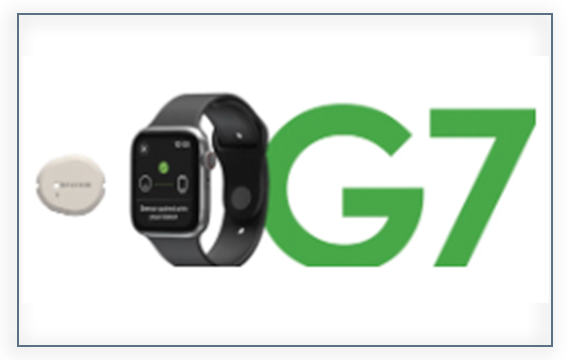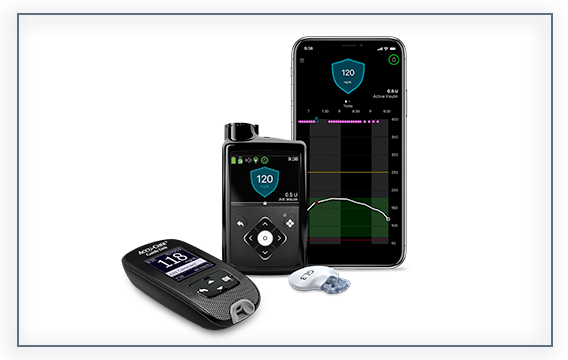Why Should I Get a CGM?
While today’s glucose meters make things much easier, it can still be a pain to constantly check your blood sugar. What if you had a way to continuously monitor your blood glucose without getting out your meter and test strips all the time? And what if you (or your loved ones) could be alerted to changes? That’s what “continuous glucose monitoring” – or CGM – is all about.

When you really look at what continuous glucose monitoring (CGM) is all about, it becomes clear why so many people tout their importance in managing their diabetes. First let’s start with defining CGM: A CGM is a small, wearable device that tracks glucose throughout the day and night, notifying you of highs and lows so you can, if needed, act immediately. CGM minimizes the guesswork for better diabetes management.
Interested in CGM therapy?
APPLY TODAYGenerally, a CGM is made of a sensor and a receiver. For most CGM systems, the flexible sensor (smaller than a syringe) goes into your skin every couple of weeks, and once it’s in, you won’t feel a thing. There is also a CGM system called Eversense 365 with an implantable sensor that lasts up to 365 days.
To see your CGM data, you’ll use either a receiver or a smart device paired to your CGM system. CGMs usually have sophisticated apps where you can dive into all of your data as well as share information with loved ones or your healthcare team. This real-time info is great when you need to monitor a loved one’s glucose regularly.
Dexcom created the video below to explain how CGM therapy works:
Why should you order from EHCS?
Learn MoreWhat is Continuous Glucose Monitoring?
Continuous glucose monitoring gives you a complete picture of your glucose, showing you where it is going and how fast it’s getting there. People who use a CGM as part of their diabetes management find that CGMs:
-
Can help lower A1C in adults 25+ with Type 1 diabetes (when used with insulin regimens, according to a public comment and response by the Washington State Healthcare Authority)
-
Read glucose regularly, which allows the wearer to keep an eye on glucose, catching highs and lows more quickly and identifying trends
-
Alert the wearer to highs and lows more quickly so you can make changes quickly
-
Track data better, which makes life easier for wearers, doctors, parents, etc.
-
Provide better insight into how lifestyle affects diabetes management
While CGM is most often used for people with Type 1 diabetes, many people (especially those using insulin) will find a CGM helpful in managing diabetes. In fact, a recent study conducted at the University of British Columbia found that a CGM helped people with Type 2 diabetes and prediabetes stick to an exercise plan, which helps control their health.
How to Get a CGM
Now it’s easy to get started! Just fill out this enrollment form, and our Diabetes Care Advisors (DCAs) will help you with every step of the insurance process. We carry CGMs from the major manufacturers including the Abbott FreeStyle Libre systems, the Dexcom G6 and G7 systems, and the Medtronic Guardian Connect. We work with hundreds of insurances, including Medicare, that cover CGM therapy for those who qualify. Your DCA will determine your benefits and then act on your behalf throughout the insurance authorization process. We will work with you and your healthcare team to ensure you received the best product suited for your specific needs.
For additional information on insurance plans that EHCS accepts, call us at 1-888-344-3434 or email us at dca@myehcs.com. If you’re ready to find out if your insurance covers a CGM, fill out the enrollment form and we’ll get the process started.
Tags: CGM, Continuous Glucose Monitors, Diabetes, Diabetes Management, Diabetes Supplies



